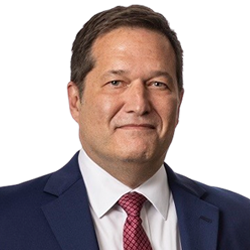"Top-level" employee protection from unreasonable discovery is extended to public employees in Missouri
Counsel representing large companies and institutions in Missouri are quite familiar with the prospect that opposing counsel may attempt to gain leverage by threatening to depose, or subpoena to testify at trial, one or more high-level corporate officials. In most cases, however, high-level corporate officials’ knowledge is clearly lacking as to the pertinent facts and issues and thus protected from discovery (or trial testimony), for good cause shown. Considering the scope of discovery and the modern realities of litigation, this is a significant protection that shields top-level executives from harassing and unnecessary interrogation. Now, for the first time, a Missouri appellate Court has extended this protection to the public sector. Wilkins v. Koster, et al., 2015 Mo. App. LEXIS 639.
By way of background, the Missouri Supreme Court, in State ex rel. Ford Motor Co. v. Messina, has held that although litigants are permitted to depose top-level executives who have discoverable information, alternate methods of discovery may make a top-level deposition unnecessary if the purpose is outweighed by the annoyance, burden, and expense to take such a deposition.71 S.W.3d 602, 606 (Mo. banc 2002). Even if a top-level employee has discoverable information, the organization or its top-level employee may seek a protective order. The Messina Court held that a party seeking a protective order for top-level employee depositions has the burden of establishing good cause, and directed trial courts to consider: whether other methods of discovery have been pursued; the proponent's need for discovery by top-level deposition; and the burden, expense, annoyance, and oppression to the organization and the proposed deponent.
In June 2015, the Missouri Court of Appeals for the Eastern District extended these limitations on subpoenaing top-level executives for deposition to subpoenas for trial. Wilkins v. Koster, et al., 2015 Mo. App. LEXIS 639. In Wilkins, the plaintiff was terminated from his previous employment as an enforcement investigator in the Office of the Missouri Attorney General. He filed suit against the Office of the Missouri Attorney General and Attorney General Chris Koster, alleging discrimination and wrongful discharge. During pre-trial discovery, the plaintiff sought to depose Attorney General Koster. Defendants refused, and instead suggested plaintiff request a corporate designee deposition pursuant to Missouri Rule of Civil Procedure 57.03(b)(4). Plaintiff filed his Rule 57.03(b)(4) deposition notice, and defendants produced Attorney General Koster’s deputy chief of staff, who testified that Koster had no direct involvement in or firsthand knowledge of the events leading to plaintiff’s termination. Plaintiff then subsequently dismissed his claims against Attorney General Koster. Prior to trial, plaintiff subpoenaed Attorney General Koster to testify, and defendants filed a motion for protective order and to quash the subpoena, pursuant to Missouri Rule 56.01, which provides the trial court may quash a subpoena for a deposition “if it is unreasonable or oppressive.” The trial court granted the protective order, the case was tried, and plaintiff appealed.
The Court in Wilkins held that the limitations upon a litigant’s right to subpoena top-level executives for deposition logically extended to subpoenas for trial, particularly when the scope of admissible evidence at trial is narrower than the scope of discoverable information. The Missouri Supreme Court has recognized that rank-and-file employees perform most tasks, while top-level employees are responsible for coordination and oversight. Thus, persons in lower positions within an organization often have more or better information. The Court reasoned that upon an appropriate showing, it served the interest of both the public and the litigants to shield top-level public employees from testifying in situations that are burdensome and largely unhelpful in deciding the issues in the lawsuit.
After Wilkins, top-level public employees can rest a little easier knowing that they will be afforded the same protections as their private sector peers. Attorneys representing public entities should be prepared to limit unnecessary inquiry of top-level civil servants and politicians, for good cause shown. Although most attorneys would not wish to waste time and money on witnesses who know nothing of the case at hand, this ruling limits the gamesmanship available in threatening busy top-level public employees with lengthy and unnecessary testimony. While the court has yet to completely define the scope of “top-level” employees in the public context, it is no longer an argument over whether the protection applies, it is only whether or not it applies to this particular public sector employee. The nuances of convincing the trial judge are well within the talents of most attorneys who are prepared to make their pitch.

Kansas City Area Returns to Pre-Pandemic Jury Verdict Trends ...

When Artificial Intelligence leads to Genuine Stupidity ...
About Missouri Law Blog
Baker Sterchi's Missouri Law Blog examines significant developments, trends and changes in Missouri law on a broad range of topics of interest to Missouri practitioners and attorneys and businesses with disputes subject to Missouri law. Learn more about the editor, David Eisenberg.
Subscribe via email
Subscribe to rss feeds
RSS FeedsABOUT baker sterchi blogs
Baker Sterchi Cowden & Rice LLC (Baker Sterchi) publishes this website as a service to our clients, colleagues and others, for informational purposes only. These materials are not intended to create an attorney-client relationship, and are not a substitute for sound legal advice. You should not base any action or lack of action on any information included in our website, without first seeking appropriate legal or other professional advice. If you contact us through our website or via email, no attorney-client relationship is created, and no confidential information should be transmitted. Communication with Baker Sterchi by e-mail or other transmissions over the Internet may not be secure, and you should not send confidential electronic messages that are not adequately encrypted.
The hiring of an attorney is an important decision, which should not be based solely on information appearing on our website. To the extent our website has provided links to other Internet resources, those links are not under our control, and we are not responsible for their content. We do our best to provide you current, accurate information; however, we cannot guarantee that this information is the most current, correct or complete. In addition, you should not take this information as a promise or indication of future results.
Disclaimer
The Missouri Law Blog is made available by Baker Sterchi Cowden & Rice LLC for educational purposes only as well as to give you general information and a general understanding of the law, not to provide specific legal advice. Your use of this blog site alone creates no attorney client relationship between you and the firm.
Confidential information
Do not include confidential information in comments or other feedback or messages related to the Missouri Law Blog, as these are neither confidential nor secure methods of communicating with attorneys. The Missouri Law Blog should not be used as a substitute for competent legal advice from a licensed professional attorney in your state.











